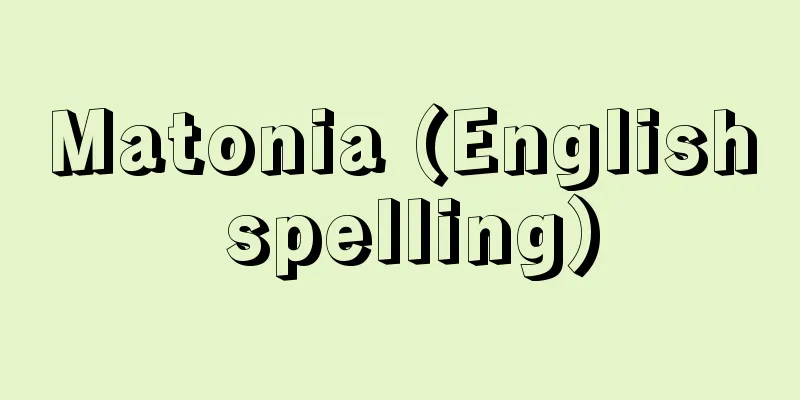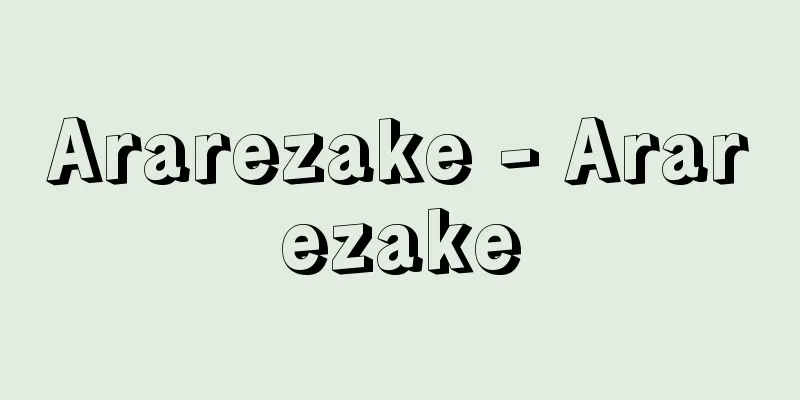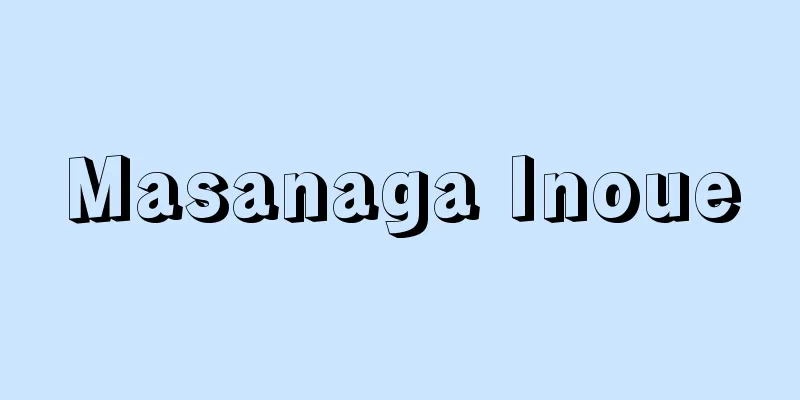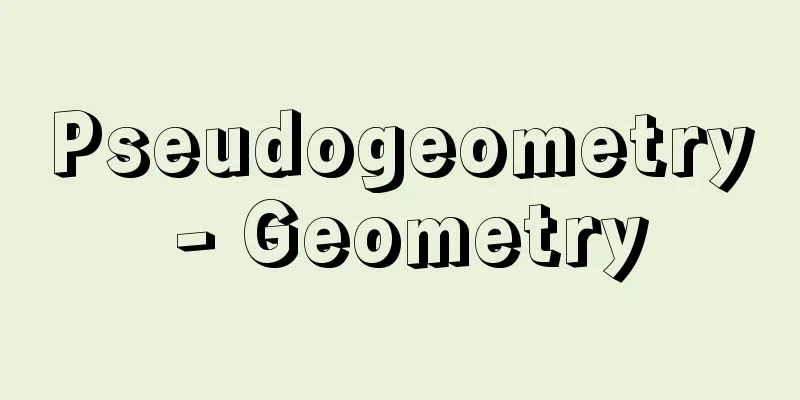Museum - Hakubutsukan (English spelling) museum
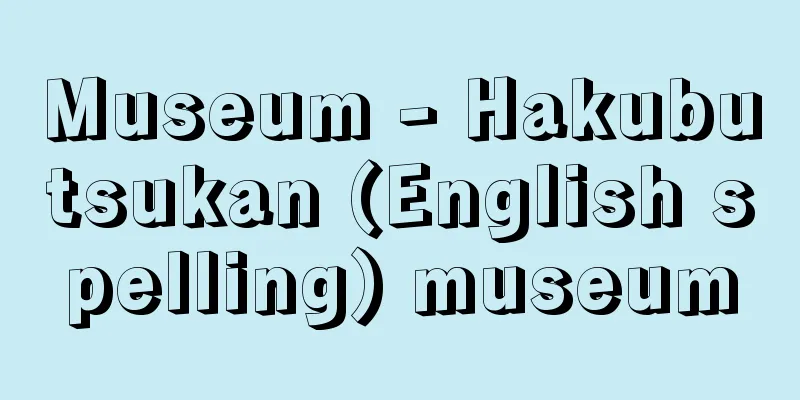
|
In Japan, the Museum Law was enacted in the spirit of the Social Education Law in 1951. According to this law, a museum is defined as "an institution whose purpose is to collect, store (including nurturing), and exhibit materials relating to history, art, folklore, industry, natural science, etc., make them available to the general public with educational considerations, and carry out activities necessary to contribute to the public's education, research, recreation, etc., as well as to conduct research on these materials." This regulation includes art museums, resource centers (folklore, history, etc.), zoos, aquariums, botanical gardens, and science museums (natural science, technology, etc.). The Japan Association of Museums defines museums as being of various types: general, local, fine art, history, natural history, science and technology, and fauna and flora. However, when referring to museums in general, they are differentiated from zoos, botanical gardens, and aquariums. It was not until the 19th century that museums began to be equipped with the modern functions they have today and to be open to the public. It is said that the impetus for this was the French Revolution (1789). After the French Revolution and the opening of the Louvre Palace, cultural properties were no longer the exclusive property of a select few, but were made to be of broad social use, and cultural properties began to be made available for education, appreciation, research, and other purposes. The word "museum" in English has a very ancient origin. After the death of Alexander the Great in the 4th century BC, his great empire was divided into three. Of these, the Ptolemy Kingdom in Egypt flourished the most, and its central city, Alexandria, replaced Athens as the political and economic center of the country. A national research institute called the "Mouseion" was built within the royal palace. This "Mouseion" is the origin of the word "museum." It is said that both Ptolemy I and II built the Mouseion because they believed that the interests of their kingdom could be achieved by protecting science. The Mouseion was equipped with accommodations to accommodate scholars from all over the country, and had an observatory, dissecting room, zoo, and botanical garden as auxiliary facilities, as well as a library with a collection of 500,000 to 700,000 volumes of literature. The Mouseion played a central role in various research activities at the time. Research into the perception of nature also made great progress here. This was because an atmosphere that emphasized observation and experimentation was created within the Mouseion, as a result of research such as Straton's on air, and this atmosphere gave birth to anatomy and physiology that involved human dissection, as well as the development of observational astronomy and geometry. In this respect, the Mouseion, from which the word museum originated, can be said to have played the role of a mecca for scientific research at the time. However, there is some debate as to whether this facility was the first modern-day museum. It is not clear exactly when the word "museum" began to be used in Japan. However, Dutch books that were introduced to Japan toward the end of the Edo period contained articles introducing the British Museum in London, the Berlin Museum, and the Natural History Museum in Paris, and although the word was not translated as "museum," scholars at the Bansho Shirabesho (Institute for the Investigation of Foreign Documents) were aware of the existence of such facilities. In 1860 (Man'en 1), a delegation traveled to America to exchange documents of ratification of the Treaty of Amity and Commerce between the United States and Japan visited museums in America, and various people left records of their experiences. Some of these people attempted to introduce the museum with various names, such as "A Museum of a Hundred Things," "A Kind of Medical Museum in Japan," "A Museum of Natural History," and "A House of Curiosities and the Study of the Principles." Two years later, members of a mission sent to Russia and Europe used names such as "House of Antiques," "Museum," "Exhibition Center," "Exhibition Hall," "Poultry House," and "Plant House."The word museum is thought to have gradually become established after Fukuzawa Yukichi wrote "Conditions in the West" in 1866 (Keio 2), in which he wrote, "A museum is established for the purpose of collecting products, antiques, and rare items from all over the world, displaying them to people, and attracting visitors." [Akira Suzumebe] History of the MuseumToday, the total number of museums in countries around the world is so large that it can only be said to number in the tens of thousands. Let us take a look at the process of their development in each country and region. [Akira Suzumebe] EuropeIt is clear that initially, collecting and displaying objects was not done with the intention of passing them on to future generations. In slavery societies, it is said that people displayed spoils of war obtained from tribal conflicts in temples and other places, and used them to boost the fighting spirit of their tribes and to unify them. During the Greek period, art collecting was also very popular. Storage facilities were established in major cities, and the collected items were made available for viewing only to a select few. In the Roman period, nobles, wealthy people, and generals actively collected paintings, sculptures, and other works of art. Although they were collected, they were probably often captured as spoils of war. These were not studied as in the Mouseion, but were displayed in art galleries and libraries built in the collectors' homes, and used to show off their power. It became popular to entertain guests in art galleries, and not only art pieces but also jewels and weapons were displayed. Natural objects were also collected, but these were only collected because they were rare, and were not studied. Animals and plants were raised and cultivated in gardens, and a form similar to today's zoos and botanical gardens began to take root. During the Roman Empire, which boasted of its culture as a great empire, personal collections were popular, but they were used for vanity and to show off social status, and it can be said that they had degenerated into low-level collections. In spite of this situation, some people opposed the fact that many paintings and sculptures were kept in the private collections of the aristocracy and the wealthy. For example, M. Agrippa argued that paintings and sculptures should be for the public, and that art works should not be kept in private collections. As the Roman Empire declined, the power of Christianity gradually grew and rejected the idolatrous paganism, leading to the dispersion and destruction of many of the collections that had been amassed. In the Middle Ages, learning and culture developed around the Christian church, and churches began to collect a variety of items. The church collected luxurious ceremonial implements, vestments, reliquaries, and other items, which it showed to believers during sacred ceremonies. It also collected and exhibited rare objects to attract the masses and spread its doctrines. Pearls, fossils, ivory, and other items that were thought to have powers for magic and prayer came to be treated as having the same value as jewels. Clergymen also conducted research on animals and plants, and the results of their research were compiled into encyclopedias, natural history books, and other publications. The Renaissance cultural movement, which developed from the 14th to 16th centuries, began when great merchants replaced feudal aristocrats and formed city republics. The merchants sought to create an anti-feudal culture and worldview, proclaiming the revival of ancient culture and placing "humanism" at the center of it. Florence, Italy, became the center of this movement, and Leonardo da Vinci, Michelangelo, and others came from there. The Medici family played a major role in the success of these people. Cosimo il Vecchio of the Medici family, who had been driving the politics of Florence since the first half of the 15th century, played a major role in protecting and nurturing scholarship and the arts, and contributed greatly to their success. At the same time, he collected a large amount of art and decorated the interiors of his palace and other residences with them. When the Medici family fell from grace, these art pieces were also scattered, but when they regained power, they once again collected the scattered collection and began construction of the Uffizi Palace to house them. This palace is said to have been the first building conceived as a museum, with large windows and perspective effects that were carefully considered to enhance the effectiveness of the exhibits. In addition, during the Renaissance, interest in ancient ruins was also high, and statues and other items were excavated in Rome and other places and displayed in the gardens of palaces. Meanwhile, from the end of the 15th century to the beginning of the 16th century, people's curiosity about the new and unknown increased with events such as Columbus's discovery of the New World, Vasco da Gama's opening up of a sea route to India, and Magellan's voyage around the world. Voyages to the New World offered many rare objects, which sparked a strong interest not only among scholars but also among the general public. In this environment, Wunderkammer (Chambers of Wonders) became popular in Germany. In these Wunderkammers, preserved animal and plant specimens, laboratory equipment for physics and chemistry, automata, ethnological specimens, and items collected during geographical discoveries and explorations were exhibited. Such scientific collections also began to appear in Italy. As universities and academies of science were founded in various parts of Europe and scientific research became more active, collections of scientific instruments also began to be created. During this time, exhibitions were often simply displays of objects rather than an organized format, and taxonomic displays were delayed. In the 17th century, scientific research made great strides. Influenced by the establishment of modern science, the world's first public museum was created at the end of the 17th century. Elas Ashmole (1617-1692) acquired materials collected by two generations of British traveller and explorer John Tradescant (1570-1638) and his son of the same name (1608-1662). He later continued to collect materials himself and donated all of them to Oxford University. This led to the establishment of the Ashmolean Museum, attached to Oxford University, in 1683. This is said to be the first science museum in the UK and the first public museum in the world. It goes without saying that many of the visitors to this museum were students from Oxford University, and it played an important role in scientific research at the university. This is a noteworthy example of research, education, and museum facilities developing together. The 18th century saw a further leap forward in public museums. For example, Hans Sloan (1660-1753), a British physician and famous collector, proposed in his will that the state purchase his vast collection and display it in a museum. This proposal was approved by Parliament in 1753, and in 1759 the national museum (the British Museum) was opened with Sloan's collection at its center. Around the same time, the Natural History Museum was established in Vienna in 1748, the Royal Botanic Gardens, Kew in London in 1759, and the Hermitage Museum in St. Petersburg in 1764. At the time, these museums, including the British Museum, were not open to the general public, with only certain individuals allowed to enter. Meanwhile, in France, there was a movement to make part of the royal collection public. The collections of successive French monarchs were made public for limited periods at the Luxembourg Palace, and the start of the French Revolution in 1789 made the public opening of the collections a definitive decision. In 1891, the National Assembly convened in Paris and decreed that the confiscated royal collections be gathered in the Louvre Palace and open to the public. At the same time, it decided to establish a central museum of fine arts, and in 1893 the Republic Museum (Louvre) opened. Influenced by these movements, gardens managed by the royal families of various countries, such as the Jardin des Plantes in Paris, the Botanical Gardens in Berlin-Dahlem, and the Royal Botanical Gardens, Kew, began to be opened to the public. In addition, the National Museum of Arts and Crafts (now the National Museum of Science and Technology), founded in Paris by a decree of the National Convention in October 1894, was opened to the public as a place of public education. Its facilities and content were excellent for its time, and it greatly inspired science and engineering museums around the world. On the other hand, there were many problems with the collection of museum materials. For example, as is clear from the example of Napoleon, one of the purposes of his expeditions to various European countries and Egypt was to plunder cultural assets and art objects from the destinations he visited, and the looted items were exhibited at the Louvre Museum. The Venus de Milo at the Louvre Museum and the Egyptian collection at the British Museum are of this type, and the same could be said about the collection of excavated items from research on ancient civilization ruins. It was not until the middle of the 19th century that the idea of in-situ preservation finally began to emerge, and plans began to emerge to create museums at the sites of ruins to store and manage artifacts. In Egypt, a warehouse near Cairo was temporarily turned into a museum in 1863 to preserve the remains of Egyptian civilization. This museum later became the Egyptian Museum, and established its role as a center for the management of remains throughout Egypt. The first Great Exhibition, held in Hyde Park, London in 1851, had a huge impact on the establishment of craft museums, science museums, and specialized museums in the following years. In Britain in particular, the exhibition itself was a great success, bringing in huge profits. These profits were used to promote science and technology, and were used to purchase land and build facilities. The year after the exhibition, the British government built a museum to purchase and display the items exhibited at the exhibition. The museum's collection subsequently grew, and in 1857 it opened the South Kensington Museum, which became even larger. As a result, it was separated into four museums: the Victoria and Albert Museum, the Science Museum, the Natural History Museum, and the Geological Museum, and each has developed and improved in its own specialized field. From the end of the 19th century to the beginning of the 20th century, a new type of museum appeared: the open-air museum, which was actively established mainly in Northern Europe, and this too had its origins in the World's Fairs. In 1878, Sweden exhibited traditional farmhouses and their clothing at the Paris Exposition, and restored traditional folk materials along with the buildings, exhibiting them outdoors. This prompted the opening of Skansen Open Air Museum in Stockholm in 1891 as the world's first open-air museum. This museum not only relocated houses, but also moved and exhibited the furniture and furnishings, and also began to exhibit various other buildings such as charcoal huts and windmills. Since then, other open-air museums have been established, such as the Vlieland Museum in Denmark, the Norwegian Folk Museum and Releyhamer Folk Museum in Norway, the Selulasaari Open Air Museum in Finland, and the Arnhem Open Air Museum in the Netherlands. Entering the 20th century, large-scale museums began to be established. A typical example is the Science Museum (Deutsches Museum), founded in Munich in 1906. What was unique about this museum was that it did not simply exhibit machines and other devices, but allowed visitors to take part in experiments to operate the machines themselves. Due to the effects of World War I and other factors, the museum did not fully open until 1925, but it can be said that this museum created a model for modern science and technology museums. After the Russian Revolution, various museums were established in the Soviet Union. Museums typical of the post-revolutionary period, such as the Museum of the Revolution and the Museum of Labor Protection, were built, as well as the Agricultural and Industrial Museum, which is related to science and technology education. In addition, after the country became a socialist society, art and craft works owned by the royal family and churches became national property under the Ordinance for the Protection of Cultural Property, and were preserved by the state. World War II dealt a major blow to many European museums. Museums faced a crisis as they were destroyed by bombings and their collections were destroyed, or looted or auctioned off by those in power at the time. After the war, each country made an effort to restore and develop the destroyed museums, and even museums that criticized the war were founded. [Akira Suzumebe] AmericaThe history of American museums can be said to be parallel to the history of the United States. European museums were formed by consolidating private collections, but in America, rather than starting with substantial private collections, museums were first established as public organizations, to which citizens would bring rare objects to form a collection. The first museum established in America was the Charleston Museum, established in South Carolina in 1773. This museum called for citizens to donate materials related to natural history through newspaper advertisements, and within a few years had collected a large amount of materials. Furthermore, while there were few museums open to the public in Europe at the time, this museum was open to the public from the beginning. In the 19th century, it came under the management of the Literary and Philosophical Society, which continued to enrich its natural history materials. America also had museums that were corporations. The Peale Museum in Philadelphia is a famous example. In this museum, the painter C. Peale exhibited mainly portraits in his home gallery, but also placed natural history specimens to attract visitors, provided explanations for them, and charged admission. It was so well received that he gradually expanded the scale of the museum, until it became a viable business, and he even opened Peale Museums in New York and Baltimore. However, he eventually ran into financial difficulties, and the materials he had collected were auctioned off and dispersed. About 100 years after the American Revolution, it is said that there were more than 200 museums in the United States. First-class museums such as the American Museum of Natural History and the Metropolitan Museum of Art in New York were founded, while university museums were also established. The first of these was the Harvard University Museum of Comparative Zoology, founded in 1859, and in 1866 the Peabody Museum at Yale University was established with a donation from the businessman George Peabody (1795-1869). When state universities were established in each state, museums were often attached to them. It is said that this was because state governments wanted universities to investigate the topography, products, and buried resources of their states. The impetus for the establishment of a national museum in the United States was an offer of donation from the Englishman James Smithson (1765-1829). In 1835, then-President Jackson reported to Congress that Smithson had donated 100,000 pounds, requesting that it be used to establish an institution for the advancement and dissemination of human knowledge. It took Congress 10 years to decide how to handle this donation, and a basic plan was drawn up. This marked the establishment of the Smithsonian Institution, which has long served as the only national research institution in the United States. The Society serves as an academic research center, awarding prizes for academic achievements, providing research grants for research, and publishing specialized books. In addition to these activities, it also has libraries, museums, and art galleries, and has made great research achievements in meteorology, astronomy, ethnology, archaeology, and art. Today, it has a number of national museums under its umbrella, including the Museum of History and Technology, the Museum of Natural History, the Air and Space Museum, the Museum of American History, and the Portrait Gallery. As mentioned above, European museums were influenced by the World's Fairs, and the same can be said for American museums. In particular, art museums and science museums were established after the expositions held in Philadelphia in 1867, Chicago in 1893, San Francisco in 1915, and Seattle in 1962. The World's Fair held in Chicago was planned to commemorate 400 years since Columbus' discovery of the Americas, and was popular for its use of night lighting and many electrically powered machines. Plans were made to use the site of the fair to establish a Chicago museum, and the Field Museum, which focused on natural history, was established based on a large donation from businessman Marshall Field (1834-1906). The Field Museum has now developed into one of the world's leading natural history museums. The building that was used as the art museum is now the Chicago Museum of Science and Industry. [Akira Suzumebe] AsiaIn terms of the long history of museums in Asia, China is at the center of them all. However, it was only after the Xinhai Revolution (1911) that modern museums were established in China. Prior to that, the imperial court had collected many works of art and other cultural assets, but independent collectors also wielded considerable influence and collected all sorts of things, including paintings, calligraphy, ceramics, dyed products, and crafts. In 1914, the treasures from the Qing Dynasty's villas were brought to Beijing and exhibited at the Beijing Exhibition Center for Antiques. Then, in 1925, the Forbidden Palace and all of its stored items were opened to the public, and the Palace Museum was founded around them, and opened to the public. When the Second Sino-Japanese War broke out and the Japanese invasion began, the museum materials had to be evacuated to Shanghai and other places to prevent them from being looted by the Japanese army. The National Central Museum, which was established in Nanjing in 1936, was also forced to close temporarily during the preparation stage due to the effects of the Second Sino-Japanese War. After World War II, the museum materials that had been evacuated were returned to their respective museums, and activities resumed. However, the revolutionary movement within the country intensified, and in 1949 the People's Republic of China was established under the leadership of the Chinese Communist Party. Prior to this, in 1948, forces opposed to the leadership of the Chinese Communist Party brought the valuable collections of the Palace Museum Nanjing Branch and the Central Museum to Taiwan by destroyer. These materials are now on display at the Palace Museum, which was established in Taipei in 1965. Because of this, it is said that many of the materials at China's Palace Museum were collected after liberation, but it is still counted among the world's leading museums. After the revolution, in 1961, the aforementioned Palace Museum and other history museums were built and opened in Tiananmen Square in Beijing, and the Museum of the Chinese Revolution was also founded. In 2003, this history museum and the Museum of the Chinese Revolution were merged to become the National Museum of China. Museums have also been established not only in Beijing, but also in Shanghai, Nanjing, Jinan in Shandong Province, Zhengzhou in Henan Province, and Changsha in Hunan Province, among other provinces. In addition to these museums, there are active attempts to establish museums at the excavation sites currently underway in various locations, utilizing the results of those excavations (such as the Qin Shi Huang Terracotta Warriors Museum and the Banpo Museum). When talking about museums in other parts of Asia, it is impossible to ignore the colonial period. Many museums in Asian countries, including Indonesia, the Philippines, and India, were established by the ruling countries during the colonial period. After independence, many of these museums were made into national or state museums, and developed into unique museums. For example, in 1817 the Dutch government established the Bogor Botanical Gardens on the Indonesian island of Java to develop and collect tropical plants, which today is the National Biological Institute, an institution that includes a botanical garden, a botanical laboratory, a herbarium and a museum. [Akira Suzumebe] JapanIn Japan, the prototypes of museums include treasure halls and votive picture halls, and a typical example of this is the Shosoin Repository at Todaiji Temple in Nara. During the Edo period, trade fairs were held where local products were collected and exhibited, and animals, plants, minerals, etc. were classified and organized at the time. In addition, at the end of the Edo period, European museums were introduced through Dutch books, and participants in Japanese missions to the United States introduced the museums they had seen there, so the usefulness of museums was becoming understood. After the Meiji Restoration, in 1870 (Meiji 3), a temporary local product bureau was established at Daigaku Minami-ko, and the following year, the Ministry of Education was established with the Museum Bureau within the ministry. In 1872, an exhibition was held at the Cathedral in Yushima, Tokyo, under the name of the Ministry of Education Museum. This exhibition lasted for over 50 days, but was so well received that it was opened to the public only on the first and sixth of each month after the exhibition period. This marked the transition from a temporary exhibition known as an exhibition to a museum with permanent exhibits. Due to the fact that preparations for the construction of the Museum of Antiquities and research into antiques were already underway, the exhibits at this exhibition focused on antiques, as well as relics excavated from archaeological sites, calligraphy and paintings, ancient musical instruments, ancient masks, furniture, old roofing tiles, weapons and armor, old coins, and old seals, as well as natural objects such as minerals, rocks, fossils, animals, plants, and local specialties from all over Japan. In anticipation of the end of the Exposition, the Ministry of Education's Museum Bureau came up with a plan to include a comprehensive museum, zoo, botanical garden, and library, and submitted a proposal for the construction of a museum bureau, museum, garden, and library. Thus, the ministry began to seriously move forward with the creation of the museum. Meanwhile, it was decided that Japan would participate in the World's Fair to be held in Vienna, Austria in 1873, and the Exposition Bureau was established. The Ministry of Education Museum, the Library, the Museum Bureau, and the Koishikawa Botanical Garden, which were the namesakes of the Yushima Exposition, were integrated into the Exposition Bureau. In 1875 (Meiji 8), a museum under the jurisdiction of the Ministry of Home Affairs was established. During the Meiji period alone, the museum's jurisdiction and name changed from (Ministry of Home Affairs) Museum, to (Ministry of Agriculture and Commerce) Museum, (Imperial Household Ministry) Museum, Library Museum, Imperial Museum, and Tokyo Imperial Household Museum. After World War II, it became a national museum, and in 1952 (Showa 27), it became the current Tokyo National Museum. Meanwhile, when a museum under the jurisdiction of the Ministry of Home Affairs was built, the Ministry of Education Museum became independent again, and in 1877, an Educational Museum was established in Ueno Park, Tokyo. The museum exhibited and opened to the public in the museum. The museum also exhibited and opened to the public throughout the Meiji, Taisho and Showa eras, Tokyo Education Museum, Tokyo Education Museum, Tokyo Education Museum, Tokyo Higher Normal School (Tokyo), Tokyo Education Museum, Tokyo Science Museum, and Tokyo Science Museum, and in 1949 it became the current National Museum of Nature and Science. During this period, not only Tokyo, but the Imperial Nara Museum was opened in 1895 (Meiji 28) and the Imperial Kyoto Museum in 1897. Both museums were based on the Imperial Museum in Tokyo, and the History Department, Art Club, Art and Craft Club (not found in Nara), and they grew into a historical and art museum. Before these Imperial Museums, museums were set up in various forms in Sapporo, Hakodate, Akita, Niigata, Kanazawa, Kyoto, Osaka, Hiroshima, Fukuoka, Kagoshima, and other places around 1877 (Meiji 10). Museum materials were frequently collected and displayed at these museums. In addition, since 1900, museums with strong characteristics began to be found. Examples include individually specialized museums such as the Patent Display Museum, Postal Museum, Okura Shukokan, Railway Museum, Red Cross Guide Museum, and Nawa Insect Museum. The Great Kanto Earthquake in 1923 (Taisho 12) caused serious damage to the Tokyo Imperial Museum and the Tokyo Museum. The buildings of the Tokyo Museum were in complete damage and all materials were lost. However, the Tokyo Museum immediately built a temporary building and was the first to display materials related to the earthquake. Later, the building was designed in Ueno Park using lessons from the earthquake, and an airplane-shaped new building was completed (after relocated, it was renamed Tokyo Science Museum in 1931). This building is still used as the first building of the National Museum of Nature and Science. In addition, when it moved to the new building, it was attempted to bring out the most innovative display technology. Large dioramas were used for natural history exhibitions, and although there were limited time for exhibitions in science and engineering, there were also attempts to demonstrate public experiments. The exhibition is divided into science and engineering, animal, plant and geology, and one of the most notable points is that two types of exhibitions were prepared: a regular exhibition that provides easy-to-understand explanations for the general public, and a research specimen room that was intended to be used by researchers. In the Showa era, the Museum Business Promotion Association was organized in 1928 (Showa 3), and "Museum Research" was published. Three years later, the Promotion Association was renamed the Japan Museum Association and continues to work with the aim of promoting the construction of museums. Usually, the National Museum Conference is held every year, aiming to promote museum facilities and advance research in museums. In addition, National Museum Week was established since 1933. Currently, the second week of October is the National Museum Week, and various events are held, and efforts are made to promote and educate the public. After the Great Kanto Earthquake, the Sino-Japanese War and World War II continued, and the museum was forced to exhibit in line with national policy. For example, the Teishin Museum's "Military Postal Service and Air Safety Exhibition," the Electrical Promotion Museum's "Electrical Substitute Exhibition Exhibition," and the Tokyo Science Museum's "Kitachi Resource Exhibition" and "Substitute Industry Promotion Exhibition." Even though it was during wartime, it can be said that this was an unwilling exhibition for museums pursuing the truth. After World War II, with the reconstruction of the war, museums began to work in search of new directions for development under democracy. In 1951, the Museum Act was enacted, and exhibitions were updated for a new era began. Around this time, the renamed Tokyo National Museum and the National Museum of Nature and Nature and Science began to take the lead in museum activities as leaders of museums across the country. After that, in the 1960s, combined with the policy of high economic growth, the promotion of science and technology was further emphasized, and the establishment of science and technology museums was popular. From the 1970s onwards, the National Museum of Ethnology was established, and with some subsidies from the state, folk museums and local museums were established one after another in each local government, and the National Museum of History and Folklore was also established. In addition, among companies, there are also places where they independently preserve and display tools, machines, historical materials, etc. used in their own production activities. In addition, many associations and industry associations also carry out the preservation of their own materials and building museums. In the 1980s, major changes were also occurring in the art of exhibitions. This is largely due to the widespread use of microcomputers. Until now, it was difficult to exhibit dynamic exhibitions in science and engineering museums, but it has been overcome by making full use of computers. Worldwide, museums with science and engineering have undergone major updates, and audiences are seeking to deepen their understanding. At the same time, new natural science museums have been built in various places, and not only museums but also youth science museums (centers) have also begun to be built. In addition, museums relating to industrial technology, not only natural science but also industrial technology, are now being built using visual exhibition methods. It is worth noting that in the 1990s, as we reached the 50th anniversary of World War II, there was a growing momentum for building museums relating to peace and war that were not often built in Japan, besides Hiroshima and Nagasaki. It is groundbreaking that it was established mainly by local governments, and in cooperation with local governments and citizens, especially as an adjoining facility for universities. Looking at the world, there are some similar materials centers on peace and war, but Ritsumeikan University International Peace Museum, which was opened in 1992, can be said to be the world's first peace museum attached to the university. In the future, the challenge will be how each museum will create a network and how convenient it can provide to its users. Many museums are already becoming more computerized in document management, and it will be necessary to further strengthen the public nature of the museum by exchanging information about materials and mutual use of materials. [Akira Suzumebe] Roles and their functionsMuseum work includes collecting, storing, organizing, displaying, research, and educational activities. [Akira Suzumebe] collectionA museum cannot exist without museum materials. Museum materials are primarily "objects," but these "objects" come in a variety of forms, including actual objects, specimens, and models. Furthermore, literature, charts, photographs, films, records, and audio recording tapes are also included in the materials. It goes without saying that the collection of museum materials is carried out for the purpose of display, but the collection and collection methods naturally differ depending on the type and purpose of the museum, for example folklore, art, archaeology, history, science, technology, natural history, etc. Therefore, when collecting, the purpose must be clearly defined in advance and collected in a systematic manner, and as a result, in either case, collection will require a considerable amount of time. A museum cannot simply display "something," but must have meaning. Just as there is a reason why something happens, in order to accurately grasp the meaning of that "something", it must clarify the systematic nature of the "something" and make it stand out. This is what is done with the "something" around the "something", but that does not mean that anything can be collected and displayed. The judgment depends on the ability of the collector (researchers, curators). In the case of archaeological materials, even if the remains are excavated through excavation, not all of them will be excavated in perfect condition, so it is also important to know how to restore them. There are various problems with materials relating to science and technology development. In particular, when you try to collect, display and preserve the actual product, you often run into great difficulties. For example, the open furnace played an important role in the development of steelmaking technology. As the free furnace disappears from Japan, even if you try to collect and preserve it, it is a very large thing, and today's Japanese museums do not have the conditions to maintain and manage. Many problems are forced to quickly resolve how these things should be dealt with. There are various difficulties and problems, but it goes without saying that the basic principle is to collect all the necessary items systematically. [Akira Suzumebe] Storage and OrganizingThe major challenge is how to store and organize the collected materials. The basic principle is to ensure that the materials can be fully utilized at any time, but it is extremely rare that the materials are aligned to a certain size, and advanced methods of organizing and storing materials of different sizes are required to organize them and understand the actual situation. The process of materials entering a museum generally involves accepting, registering, and storing them. Of these, the question is how much information to register when registering, and although it may vary depending on the purpose and type of museum, it is often necessary to register the history of the materials. In recent years, the mechanization of document management has progressed, and computer-based records have become more common, and in the future, management systems that involve linking video discs and other computers will likely be considered. The current situation is that, along with accurate data management, the storage and management of "somethings" are important, and a lot of effort must be put into it. Large-scale historical and art museums have also been well-established with scientific storage systems, but science and technology museums are in the midst of their maintenance. In order to store materials, management such as temperature, humidity, insect control, and prevent fading from light must be thoroughly carried out, but with the exception of some materials from a small number of museums, the actual management of materials in Japan is in a state that could be said to be extremely insufficient. In addition to these points, many museums are becoming urgently urgently the issue of lack of storage space. [Akira Suzumebe] ExhibitionExhibitions are one of the most important tasks for museums. There are various ways to display, such as special exhibitions held on a specific theme for a certain period of time, and mobile exhibitions where museum materials are taken outside and exhibited using external facilities. Whatever the exhibition method is, the basic principle is how the exhibition content and theme can be understood by visitors, and in that sense, there is no uniformity in the way the exhibition is displayed. However, sufficient consideration is required for the techniques used for exhibitions. For example, there are various issues such as how the viewer is at which the viewer's perspective is, how to set the movement of the tour, and how to set the tour time and rest area for the entire museum. Exhibitions must always be fresh and attractive. In particular, modern science and technology exhibitions will require that they be able to be updated constantly, while on the other hand, they must not only be new, but convey the fundamentals and truths of the ideas found within the exhibit. Today, it is possible to display in all kinds of ways, including video and slides, and it can be said that it is time to consider exhibiting in a way that makes the most of modern science and technology. [Akira Suzumebe] Research and Educational ActivitiesIt is no exaggeration to say that research and research activities will determine the quality of the museum. The pillars of research in museums are said to be researching museum materials and research that enhances educational effects in museums, but in any case, it would not be an exaggeration to say that it is meaningless unless it is researched in solving modern issues in modern society. This is not limited to museums, but is the same in any field, but in reality, it is insufficient to say that research is guaranteed in museums. Even in museums where research departments are established, researchers are forced to do a considerable amount of work other than research. If the museum is merely a part of displaying things from the past, it would not be enough to fully demonstrate the museum's original function. It is important for visitors to read something from many past materials and to find out a perspective, and there is a major role that researchers should play in this regard. Museum researchers are particularly required to carry out their research activities with an outsider's attention. This is something that is common to the constant collection of materials. At the same time, how to harmonize the individual researchers and the organization of the museum as a whole has become a research issue. A more direct issue is the development and research of materials preservation techniques. The museum's educational activities are the very most important part of the museum's educational activities. In addition, it also conducts educational activities in various ways, including lectures, seminars, lectures, film events, outdoor research, and production practice. [Akira Suzumebe] Future challengesOne of the major challenges for Japanese museums in the future is improving the policies and attitude towards national museums. The national budget for museums that should inherit the cultures of their ancestors, develop cultural heritage, and contribute to the formation of culture in the future is something that can only be said to be poverty in a cultural state. Furthermore, if we do not enhance our research activities in museums, it will be difficult to hope for a high quality museum. It is clear that unless we establish a system that allows researchers to conduct research toward modern themes, exhibitions themselves will not be born with the content that modern society is looking for. [Akira Suzumebe] "Lecture of Museum Studies, Supervised by Koga Tadamichi et al., 10 volumes (1981, Yuzankaku Publishing)" ▽ "Introduction to Museums" edited by Ito Toshio et al. (1978, Gakuensha)" ▽ "National Museums General Collection" edited by Japan Museum Association (1986, Gyosei)" ▽ "Museums of the World" 22, separate volume 1 (1977-1979, Kodansha)" ▽ "Museums of Japan" edited by Kitamura Tetsuro et al., 13 volumes (1981-1982, Kodansha)" ▽ "Museums and Art Museums" edited by Umesao et al. (1981, Chuokoronsha)" ▽ "Museums and Art Museums " edited by Umesao et al., "The World of Museums: A Conversation of Directors" (1980, Chuokoronsha)" ▽ " "World War and Peace Museum, Supervised by Arai Shinichi and Saotome Katsumoto," 6 volumes (1997, Japan Book Center)" ▽ "Ohori Tetsu, "All Overview of the Japanese Museums" (1997, Tokyodo Publishing)" ▽ "Mizuto Makoto, "Thinking about Museums" (1998, Yamakawa Publishing)" ▽ "Ishimori Hidezo, "Introduction to Museums" (1999, Nippon Broadcasting Publishing Association)" ▽ "Kawanari Hiroshi, "Museums of the World" (1999, Maruzen)" [Reference items] | | | | | | | Folklore | | | | | | | | | | | | | | [Complete Material] | |One of the world's largest museums, the pride of the UK. Opened in 1759. It exhibits many important ancient relics and artworks from around the world, including Egyptian civilization. The facade of the building, with its rows of Ionic columns, was designed by British architect Smirke. London, UK ©Masashi Tanaka "> The British Museum The museum was founded in 1748 with the main collection of Franz I, husband of Maria Theresa. It was designed by German architect Semper. It houses around 20 million items, including natural science materials such as minerals and living organisms, and artifacts excavated from ruins. It stands opposite the Kunsthistorisches Museum on Maria Theresa Square. Part of the World Heritage Site "Historical Center of Vienna" (Austria, registered in 2001) Vienna, Austria ©Fam. Kanagawa "> Natural History Museum (Vienna) The world's first open-air museum in the Djurgården district. Opened in 1891. Traditional buildings from around the country are relocated and exhibited here. The photo shows the Seglora Church, built in 1729. Stockholm, Sweden ©Shogakukan "> Skansen Open Air Museum Located on the Bygdøy peninsula in the southwest of Oslo, it exhibits historical buildings collected from all over Norway. The photo shows the Stave Church, a wooden building from the 12th century. Norway, Oslo ©Shogakukan "> Norwegian Museum of Folklore A museum that introduces the history of aviation technology development, including balloons, airplanes, and space development. Opened in 1976. It displays many real-life items, including the Wright brothers' Flyer, military aircraft, missiles, and spacecraft. Washington, USA © Shogakukan "> Smithsonian Aerospace Museum It is a major hall of Chinese cultural assets that was established in the latter half of the Forbidden City in 1925. It utilizes the palace buildings and displays top-class artworks such as bronze vessels, paintings, and crafts. The photo shows Qingqing Gate. Part of the World Heritage "Imperial Palaces of the Ming and Qing Dynasties in Beijing and Shenyang" (China, registered in 1987 and 2004) Beijing, China ©Shogakukan "> The Palace Museum (Beijing) It stores and displays materials excavated from the Moyoro Shell Mound in the city, as well as archaeological materials from the culture of Okhotsk, as well as materials from northern ethnic groups such as the Sakhalin Ainu and Giryak. It was established in 1936 (Showa 11), and was transferred to Abashiri City in 1958. It is one of the oldest museums in Hokkaido. Abashiri City, Hokkaido ©Shogakukan "> Abashiri Municipal Local Museum This museum preserves and uses the building (nationally designated Important Cultural Property) of the former fourth high school building (a nationally designated important cultural property) in 1891 (Meiji 24). It preserves and displays works and materials from local people, writers and literary figures, including Muro Saisei, Izumi Kyoka, and Tokuda Akie. Kanazawa City, Ishikawa Prefecture ©Hotto Ishikawa Tabinet "> Ishikawa Museum of Modern Literature The world's first broadcast museum set up by NHK on Mt. Atago, the birthplace of Japanese broadcasting. Opened in 1956 (Showa 31). The four-story building introduces the progress of broadcasting, which has progressed into radio, television, satellite broadcasting, high-definition and digital broadcasting. Tokyo Minato-ku ©Yutaka Sakano "> NHK Broadcasting Museum Founded in 1917 (Taisho 6) by businessman Kihachiro Okura, this is Japan's first private art museum. Its collection includes paintings, sculptures, crafts, ceramics, and Noh costumes, totaling approximately 2,000 pieces. The original building was damaged in the Great Kanto Earthquake, and the current building was designed by Chuta Ito and built in 1927 (Showa 2). Minato Ward, Tokyo ©Yutaka Sakano "> Okura Museum of Art This national museum opened in 1897 (Meiji 30). In 1966 (Showa 41), a new exhibition hall was opened, and art and cultural properties in various fields such as archaeology, painting, sculpture, and crafts are exhibited. The museum's collection and deposited items number approximately 12,000 items. The main building of the former Imperial Kyoto Museum (photo), completed in 1895, is a Western-style brick building designed by architect Tokuma Katayama. It is used for special exhibitions. Nationally designated Important Cultural Property Kyoto City, Kyoto Prefecture ©NetAdvance "> Kyoto National Museum Important traditional building preservation district Kurashiki City, Okayama Prefecture © Kurashiki City "> Kurashiki Archaeological Museum Ueno Main Building Exhibition Hall. There are exhibition rooms on astronomy and space, focusing on the birth of life and the evolution of living things. There is also a new building on the premises, which has exhibits on forests and the sea, and where you can experience everyday science such as force and electricity. Taito-ku, Tokyo ©Yutaka Sakano "> National Museum of Nature and Science This is a research museum that conducts surveys and research on ethnology and cultural anthropology, and collects and displays materials based on the results of the surveys and research. The building was designed by Kisho Kurokawa and opened in 1977 (Showa 52). It has four floors above ground, and the permanent exhibition space on the second floor displays materials related to the societies and cultures of the world's ethnic groups, which are arranged so that they can be compared with Japanese culture. Suita City, Osaka Prefecture ©Shogakukan "> National Museum of Ethnology It was established in 1981 as a university joint use institution and opened in 1983. It is the only national historical museum in Japan. In addition to actual materials, it also incorporates precision replicas and restored models, and displays Japanese history and folklore from primitive to modern times. The building, which is built on the ruins of Sakura Castle, is designed by architect Ashihara Yoshinobu. Sakura City, Chiba Prefecture © Shogakukan "> National Museum of Japanese History The facility was established in 1994 (Heisei 6) with the aim of conveying the "heart of manufacturing" to young people who will be the next generation. The Toyota Self-Owned Fabric Factory opened by Toyota Sakichi in 1911 (Meiji 44), and the building is made from a red brick building in the Taisho era. It has an approximately 4,000 items on display, and provides an easy-to-understand explanation of the changes in textile machinery technology and automotive and production technology. Nagoya City, Aichi Prefecture © Shogakukan "> Toyota Commemorative Museum of Industry and Technology Research facility featuring the Manyoshu. Takaoka City, a place associated with the Manyoshu, opened in 1990 (Heisei 2). It houses and displays valuable materials, including old manuscripts, and functions as an information center that is useful for researching and researching the Manyoshu, and also as a learning center for the general public. Takaoka City, Toyama Prefecture © Shogakukan "> Takaoka City Manyo Historical Museum The current main building opened in 1938 (Showa 13) in place of the old main building. It is an oriental-style building with a concrete structure and a tiled roof, and exhibits Japanese art, crafts, and historical materials. Nationally designated important cultural property Taito-ku, Tokyo ©Yutaka Sakano "> Tokyo National Museum It holds not only Japanese currency, but also coins from all over the world, and introduces the historical changes they have. Opened in 1985 (Showa 60). Seishohmaru, Chuo-ku, Tokyo © Seishohmaru "> Bank of Japan Monetary Research Institute Currency Museum The museum exhibits materials that convey the devastation that occurred immediately after the atomic bombing of August 6, 1945 (Showa 20). Designed by the Kenzo Tange Planning Laboratory (Tange, Yukio Otani, Takashi Asada), it opened in 1980. Inside the museum, many vivid materials from that time are on display, such as glass that melted due to the high heat, clothing of citizens who were exposed to the bomb, and stones with the image of a person burned into them. It is located within the Peace Memorial Park. The photo shows the main building (a nationally designated important cultural property). Hiroshima City, Hiroshima Prefecture © Hiroshi Aizawa "> Hiroshima Peace Memorial Museum This museum introduces Fukuoka's history and local folk culture, with the theme of exchange with continental culture. It features permanent exhibitions such as the "King of Han-Hounen" (national treasure) discovered on Shika Island and items excavated from the Koroku Museum. In addition, various special exhibitions are held throughout the year. Opened in 1990 (Heisei 2). Approximately 73,500 items in the collection. Masashi Tanaka, Fukuoka City, Fukuoka Prefecture © Masashi Tanaka "> Fukuoka City Museum The museum opened in 1982 (Showa 57) as the central facility of Kai Fudoki no Oka and Sone Hill Park. It displays archaeological materials excavated and investigated in Yamanashi Prefecture. Around the museum, there are many important ruins, including the Choshizuka Kofu, where you can freely visit. Kofu City, Yamanashi Prefecture © Shogakukan "> Yamanashi Prefectural Archaeological Museum Source: Shogakukan Encyclopedia Nipponica About Encyclopedia Nipponica Information | Legend |
|
日本では、1951年(昭和26)社会教育法の精神に基づき、「博物館法」が制定された。その法律によれば、博物館とは「歴史、芸術、民俗、産業、自然科学等に関する資料を収集し、保管(育成を含む)し、展示して教育的配慮の下に一般公衆の利用に供し、その教養、調査研究、レクリエーション等に資するために必要な事業を行い、あわせてこれらの資料に関する調査研究をすることを目的とする機関」と定められている。 この規定のなかには、美術館、資料館(民俗、歴史など)、動物園、水族館、植物園、科学館(自然科学、技術など)が含まれている。日本博物館協会では、博物館の種類として、総合、郷土、美術、歴史、自然史、理工、動植物があるとしている。しかし、一般的に博物館という場合には、動物園、植物園、水族館などとは区別されている。 博物館が、今日のように近代的な機能を整えて、広く一般に公開されるようになったのは19世紀に入ってからである。その契機はフランス革命(1789)であったともいわれている。フランス革命後に、ルーブル宮殿が開放されるようになって以降、文化財を一部の者だけの占有物にせず、広く社会的に役だてるような形態がとられるようになり、文化財が教育、鑑賞、調査研究などに供されるようになった。「博物館」ということばは、英語ではmuseumであり、その語源は非常に古い歴史をもっている。 紀元前4世紀、アレクサンドロス大王の死後、彼の大帝国は3分割された。そのうちエジプトのプトレマイオス王国はもっとも栄え、その中心都市アレクサンドリアが、アテネにかわって政治・経済の中心地となり、その王宮内には「ムセイオン」とよばれる国立の研究所が建てられた。この「ムセイオン」が「ミュージアム」の語源である。 プトレマイオス1世、2世は、ともに科学を保護することによって、王国の利益がみいだせるとして、ムセイオンを建てたといわれている。ムセイオンの中には、各地からの学者を集めるための宿舎も設備され、天文台、解剖室、動物園、植物園を付属施設としてもち、図書館も整備されて、50万~70万巻の文献が所蔵されていたという。ムセイオンは、当時のいろいろな研究の中心的な役割を果たしていた。 自然の認識に関する研究もここで大きな発展を遂げている。それは、ストラトンの空気に関する研究などから、観察・実験を重視する気風がムセイオンのなかにつくりだされたからで、そのような気風から、人体解剖を伴った解剖学、生理学が生まれたり、観測天文学や幾何学などが発達した。このような点で、博物館の語源になったムセイオンは、その当時の科学研究のメッカの役割を果たしていたということができる。しかし、この施設を今日的な博物館の最初のものであると規定することは議論のあるところである。 日本で「博物館」ということばがいつから使われ始めたかについては、正確にはさだかでない。しかし、江戸時代の末期に日本に移入された蘭書(らんしょ)などには、ロンドン大英博物館、ベルリン博物館、パリ自然史博物館の紹介記事が載っており、「博物館」ということばに翻訳はしていないが、そうした施設があるということは、蕃書調所(ばんしょしらべしょ)の学者たちにはわかっていた。 1860年(万延1)に、日米修好通商条約の批准書交換のためにアメリカに渡った使節団が、アメリカで博物館を見学し、その際の記録をいろいろな人が残しているが、そのなかには「百物館」「我国の医学館の類」「博物所」「奇品はた究理の館」など、さまざまな名称で博物館を紹介しようとしている。 その2年後にロシア、ヨーロッパに派遣された使節団の人々は、「古物有之館」「博物館」「展覧場」「展観場」「鳥畜館」「草木館」などの名称を使っている。そして、福沢諭吉が1866年(慶応2)に『西洋事情』を著し、そこで「博物館ハ世界中ノ物産、古物、珍品ヲ集メテ人ニ示シ、見物ヲ博スル為(ため)ニ設ルモノナリ」と記したことから、しだいに博物館ということばが定着していったと考えられる。 [雀部 晶] 博物館の歴史今日、世界の各国の博物館の総数は数万としかいえないほどの多数に上るが、各国、各地域ごとにその発展の過程をみてみよう。 [雀部 晶] ヨーロッパ物を収集し、陳列するということの当初が、それを後世に伝えようとするようなものでなかったことは明らかである。奴隷制社会になると、部族間の抗争などで得た戦利品を神殿などに並べ、自部族の戦意の高揚や統一のためにそれらを利用したともいわれている。 ギリシア時代には、美術品の収集も盛んに行われた。おもだった都市には収蔵庫がつくられ、収集された品々は一部の特定者だけが観覧できるようになっていた。 ローマ時代にも、貴族、富豪、将軍などが絵画、彫刻などの美術品を盛んに収集していた。収集とはいえ、おそらく戦利品として奪取してくることが多かったであろう。そして、それらは「ムセイオン」のように研究の対象にされるのではなく、収集者たちの邸内につくられた絵画館、図書館などに陳列されて彼らの力の誇示に使われた。来客があればそうした絵画館などで接待することが流行し、美術品に限らず、宝石、武器なども並べられていた。さらに自然物なども収集されたが、それらも珍しいということだけが目的とされ、研究の対象にはされなかった。庭園では、動物・植物の飼育・育成が行われ、今日の動物園、植物園に準ずるような形のものが芽生えている。大帝国として文化を誇ったローマ帝国の時代は、いってみれば個人の収集が流行したが、それは虚栄と社会的地位の誇示に使われるという、次元の低いコレクションに堕していたといえる。 こうした状況下にあったが、数多くの絵画や彫刻などが貴族、富豪の邸内に私蔵されることに反対をした者もいた。たとえばM・アグリッパは絵画・彫刻は公衆のためにあらねばならないと主張し、美術品などを私蔵すべきでないことを論じている。 ローマ帝国の衰退とともに、キリスト教の力がしだいに大きくなり、偶像崇拝的な異教を否定したために、それまで収集されたコレクションの多くが散逸し、破壊されていった。 中世になると、キリスト教会を中心に学問、文化が形成されて、教会にさまざまなものが収集されるようになった。教会は豪華な儀式の用具、祭服、聖遺物箱などを収集し、神聖な儀式の際にそれらを信者に見せ、さらに珍しいものを収集、展示して民衆をひきつけ、教義の普及を図ったりもした。また呪術(じゅじゅつ)や祈祷(きとう)の力のもとと考えられていた真珠、化石、象牙(ぞうげ)などが、宝石と同等の価値あるものとして扱われるようにもなった。動物・植物についても聖職者たちによって研究が進められ、その成果が百科事典、博物誌などに編纂(へんさん)されるようにもなった。 14~16世紀にかけて展開されたルネサンス文化運動は、大商人たちが封建貴族にとってかわり、都市共和国を形成するというところから始まった。商人たちは反封建的な文化、世界観をつくりあげようとして、古代文化の復興を掲げ、その中心として「ヒューマニズム」を据えたのである。 イタリアのフィレンツェはその中心地となったが、そこではレオナルド・ダ・ビンチ、ミケランジェロらが輩出した。これらの人々が活躍した背景には、メディチ家の存在が大きくあった。15世紀前半からフィレンツェの政治を動かしていたメディチ家のコジモ・イル・ベッキオは、学問・芸術の保護育成に大きな役割を果たし、貢献した。それと同時に美術品を大量に収集し、宮殿などの邸内をそれらで飾った。一時期、メディチ家が没落したとき、これらの美術品も散逸してしまったが、力を取り戻すと、ふたたび散逸したコレクションを収集するとともに、その収納のためにウフィツィ宮殿の建設を開始した。この宮殿は、展示の効果を高めるために窓を大きくしたり、遠近法的効果を考えたりするくふうが凝らされた、美術館として考えられた最初の館ではないかといわれている。また、ルネサンス期は古代遺跡にも関心が集まり、ローマなどで彫像などが発掘され、宮殿の庭などに陳列されていたようである。 一方、15世紀末から16世紀初頭には、コロンブスの新大陸の発見、バスコ・ダ・ガマのインド航路の開拓、マジェランの世界一周航海などによって、人々は新しいもの、未知のものへの好奇心を募らせた。新しい世界への航海は、非常に珍しい物を数多く提供し、学者ばかりでなく、一般民衆もそれらに強い関心をもつようになった。 そうした状況のなかで、ドイツではブンダーカマーWunderkammer(驚異の部屋)とよばれるものがはやりだした。このブンダーカマーには、アルコール漬けの動物・植物の標本、物理・化学の実験道具、自動装置の機械類、民族学的な標本、そして地理学上の発見・探検などが行われた際の収集品が展示された。このような科学コレクションはイタリアでもみられるようになった。またヨーロッパ各地に大学や科学アカデミーなどが創設され、科学研究が盛んになるにつれて、科学機器のコレクションなども始まった。 この時期の展示は、整理されたものではなく、ただ物を陳列するだけというものが多く、分類学に基づいた展示は時を待たなくてはならなかった。 17世紀になると科学的研究が飛躍的に進歩した。近代科学の成立の影響も受け、17世紀末には世界最初の公共博物館がつくられた。イギリスの旅行家・探検家であるトラデスカントJohn Tradescant(1570―1638)と同名の息子(1608―1662)の2代にわたって収集された資料をアシュモールElas Ashmole(1617―1692)が入手し、その後、彼自身も資料収集を続け、その全資料をオックスフォード大学に寄贈した。これを中心にして、1683年オックスフォード大学付属のアシュモリアン博物館が設立された。これがイギリス最初の科学博物館であり、世界初の公共博物館であるといわれている。 この博物館の利用者の多くがオックスフォード大学の学生であることはいうまでもなく、大学の科学研究において重要な位置を占めた。研究・教育と博物館施設とが一体をなして発展した例として注目すべきものがある。 18世紀には、公共博物館のいっそうの飛躍がみられる。たとえばイギリスの医学者で収集家として有名であったスローンHans Sloan(1660―1753)は、国が自分の膨大なコレクションを購入し、それを博物館で公開するように遺言書で提案した。1753年にこの案件が国会で承認され、1759年スローンのコレクションを中心にして国立博物館(大英博物館)が開設された。 これと前後して、1748年ウィーンに自然史博物館、1759年ロンドンにキュー王立植物園、1764年サンクト・ペテルブルグにエルミタージュ美術館などが設立された。大英博物館をはじめ、これらの博物館は、当時、一般には公開されず、特定の者に限って入場が許されていた。 一方、フランスでは王室のコレクションの一部を公開する動きがあった。フランス王家歴代のコレクションが期日を限ってリュクサンブール宮殿で公開されるようになり、さらに1789年に始まったフランス革命によりコレクション公開は決定的になった。 1891年、パリに招集された国民議会は、没収した王家のコレクションをルーブル宮殿に集めて一般に公開することを布告した。と同時に中央美術博物館を設立することを決定し、1893年には共和国立美術館(ルーブル美術館)が開館した。こうした動きの影響を受けて、パリ植物園、ベルリン・ダーレム植物園、キュー王立植物園など各国の王家が管理していた庭園が公開されるようになった。また、1894年10月の国民公会の政令に基づいて創設されたパリの国立工芸博物館(現在の国立科学技術博物館)が国民教育の場として公開され、当時としては施設・内容とも充実しており、世界の理工学関係の博物館に対して大きな刺激を与えた。 一方、博物館の資料の収集については多くの問題があった。たとえばナポレオンの例をみても明らかなように、彼のヨーロッパ各国やエジプトへの遠征の目的の一つに遠征地の文化財・芸術品の略奪が含まれており、略奪品がルーブル美術館に展示されたりしていた。ルーブル美術館のミロのビーナス、大英博物館のエジプトに関する収集品もそうした類のものであり、古代文明遺跡調査に伴う発掘品の収集についても同様のことがいえた。 19世紀中ごろになって、ようやく現地保存という考え方が生まれてきた。遺跡のある場所に遺物を保管・管理するための博物館をつくる計画がみられるようになった。 エジプトでは、1863年にカイロの近郊にあった倉庫を一時的に博物館とし、エジプト文明の遺物の保存に努めた。この博物館がその後エジプト博物館となり、エジプト全体の遺物の管理にあたり、そのセンターとしての機能を確立していった。 1851年、ロンドンのハイド・パークで開催された第1回万国博覧会は、その後の工芸博物館、科学博物館、個別専門博物館の創設に多大な影響を与えた。とくにイギリスでは、この博覧会事業そのものが大成功を収め、莫大(ばくだい)な収益金をあげることができた。この収益金を科学・技術の振興のために使用することとなり、用地買収・施設建設の費用にあてられた。博覧会開催の翌年から、イギリス政府は、博覧会に出品されたものを購入し展示する博物館を建設した。その後、この博物館は収集品が増大し、1857年にサウス・ケンジントン博物館を創設したが、さらに規模が大きくなった。そのためにビクトリア・アルバート美術館、科学博物館、自然史博物館、地質博物館の4館に分離され、それぞれの専門的な立場で発展・充実が図られてきた。 19世紀末から20世紀初頭にかけて、新しいタイプの博物館が登場した。それは、北ヨーロッパを中心にして盛んに創設された野外博物館であるが、これも万国博覧会が誕生の契機になっている。 1878年、パリで開催された博覧会で、スウェーデンは伝統的な農家とその衣服などを出品するに際し、伝統的な民族資料を建物ごと復原し、野外にそれらを展示した。これがきっかけとなって、1891年にはストックホルムにスカンセン野外博物館が世界で最初の野外博物館として開館した。この博物館は、家を移築しただけではなく、家具・調度品もいっしょに移して展示し、さらに炭焼き小屋、風車小屋などいろいろな建築物も展示するようになった。これ以降、野外博物館としてデンマークのフリーランド博物館、ノルウェーのノルウェー民族博物館・リレーハーマー民族博物館、フィンランドのセルラサーリ野外博物館、オランダのアルンヘム野外博物館などが創設された。 20世紀に入ると大規模な博物館が創設されるようになる。1906年、ミュンヘンに創設された科学博物館(ドイツ博物館)がその一つの典型である。この博物館の特徴は、ただ単に機械などを展示するだけでなく、見学者自身がその機械装置を駆動させる実験に参加できるようにしたことである。第一次世界大戦の影響などのために本格的な開館は1925年になったが、この博物館が現代的な科学技術博物館の見本をつくったといってよいであろう。 ロシア革命後のソ連では、いろいろな博物館が整備されていった。革命博物館、労働保護博物館など革命後らしい博物館が建設されたり、科学・技術教育に関係する農工博物館がつくられた。また社会主義社会になり、王家や教会などが所有していた美術品・工芸品が文化財保護令によって国有となり国家的に保存されるようになった。 第二次世界大戦は、ヨーロッパの多くの博物館に大打撃を与えた。爆撃などによる博物館そのものの破壊、収蔵品の破壊、時の権力者による収蔵品の略奪・競売による散逸など危機的状況を呈した。戦後、各国はその破壊された博物館の復旧、発展に努力を払い、戦争を告発する博物館も創設された。 [雀部 晶] アメリカアメリカの博物館の歴史は、合衆国の歴史とともにあるといえる。ヨーロッパの博物館は、個人のコレクションが集約されるといった形で形成されていったが、アメリカでは個人の充実したコレクションがその始まりになったというより、まず公立で博物館組織をつくり、そこに珍しいものを市民が持ち寄って資料を形成するという形であった。 アメリカで最初につくられた博物館は、1773年サウス・カロライナ州につくられたチャールストン博物館である。この博物館は、新聞広告によって市民に自然史にかかわる資料の提供を呼びかけ、数年後には大量の資料が収集できた。また当時のヨーロッパでは公開している博物館は少なかったが、この博物館は最初から公開された。19世紀になって文学哲学協会が管理することになったが、自然史関係資料も充実させていった。 また企業としての博物館もアメリカにあった。フィラデルフィアのピール博物館が有名である。これは画家のC・ピールが自宅の画廊に肖像画を中心に展示し、一方で客寄せのために自然史関係の標本を置き、それに解説をつけて公開し、入場料もとったというものである。好評を博したため、その規模をしだいに大きくしていき、企業として成り立つまでにし、ニューヨーク、ボルティモアにまでピール博物館をつくった。しかし結局は経営に行き詰まり、収集した資料も競売にかけられるなどして散逸してしまった。 アメリカ独立後、約100年で、アメリカには200以上の博物館があったといわれる。ニューヨークのアメリカ自然史博物館、メトロポリタン美術館など第一級の博物館が創設される一方、大学にも博物館がつくられている。1859年に設立されたハーバード大学比較動物学博物館がその最初のものといわれ、1866年には実業家ピーボディーGeorge Peabody(1795―1869)の寄付金によりエール大学にピーボディー博物館が生まれた。 各州に州立大学が設立されていく際に博物館が併設されていくケースも非常に多くあった。それは州政府が大学をして州内の地勢・産物・埋蔵資源の調査などにあたらせようとしたためだといわれている。 アメリカにおける国立の博物館設立の契機になったのは、イギリス人スミソンJames Smithson(1765―1829)からの寄付の申し出であった。1835年、当時の大統領ジャクソンは議会に対して、スミソンより10万ポンドの寄付があり、それを人類の知識の増進と普及のための機関の設立に使用してほしい旨、申し出があったと報告した。議会はこの寄付の取り扱いについて10年間かかってようやく決定し、基本計画が作成された。これによってアメリカで長い間唯一の国立研究機関としてその機能を果たしてきたスミソニアン・インスティチューションが設立された。 この協会は、学術調査研究センターの役割を果たし、学問的成果に対しては賞金を出したり、調査研究に対して研究費を出したり、専門書を刊行したりしている。こうした事業のほか、図書館、博物館、美術館を併設するとともに、気象、天文、民族、考古、美術などに関して大きな研究成果をあげている。今日、その傘下に、歴史技術博物館、自然史博物館、航空宇宙博物館やアメリカ史博物館、ポートレート・ギャラリーなど数多くの国立博物館がある。 ヨーロッパの博物館が万国博覧会の影響を受けたことを前述したが、アメリカの博物館も同様である。とくに1867年フィラデルフィア、1893年シカゴ、1915年サンフランシスコ、1962年シアトルでそれぞれ開催された博覧会のあとには、美術館、科学博物館が設立されている。 シカゴで開催された万国博覧会は、コロンブスのアメリカ大陸発見400年を記念して企画され、夜間照明、電気仕掛けで動く機械を多く用いて人気を博した。この博覧会の跡地を利用して、シカゴ博物館設立の計画が練られ、実業家フィールドMarshall Field(1834―1906)からの大口の寄付を基礎に、自然史を中心にしたフィールド博物館が設立された。このフィールド博物館は、現在、世界有数の自然史博物館へと発展している。また、美術館の建物として使われていたものが、シカゴ科学産業博物館になっている。 [雀部 晶] アジアアジア地域における博物館は、歴史の長さからすれば、中国が中心となるところである。しかし、中国で近代的な博物館が創設されるのは辛亥(しんがい)革命(1911)以降のことである。それ以前、宮廷は多くの美術品をはじめとする文化財を収集していたが、他方、在野の収集家たちも相当な力をもっており、絵画、書、陶磁器、染色品、工芸品などあらゆるものを収集していた。 1914年、清(しん)朝の離宮にあった宝物が北京(ペキン)に集められ、北京古物陳列所が設けられて展示された。ついで1925年には故宮(こきゅう)とそこに収蔵されていたものがすべて開放され、それらを中心に故宮博物院が創設され、一般にも公開されるようになった。日中戦争が始まり、日本軍の侵略が開始されると、日本軍による略奪を防ぐため、博物館資料は上海(シャンハイ)などに疎開させなければならなかった。1936年に南京(ナンキン)に設立された国立中央博物院も、日中戦争の影響で、準備段階で一時、閉鎖を余儀なくされた。 第二次世界大戦後、疎開させられていた博物館資料もそれぞれの博物館に戻り、その活動も再開された。しかし国内の革命運動が激しく展開され、1949年に中国共産党の指導のもとに中華人民共和国が成立する。 これ以前、1948年中国共産党の指導に反対する勢力は、故宮博物院南京分院、中央博物院の貴重な収蔵品を駆逐艦で台湾に持ち込んだ。これらの資料は、1965年に台北に設立された故宮博物院に展示されている。こうしたことのため、中国の故宮博物院の資料は解放後に収集されたものが多くなっているといわれるが、それでも世界有数の博物館に数えられている。 革命後、1961年に前述の故宮博物院をはじめとして、歴史博物館が北京の天安門広場に新築、開館され、あわせて中国革命博物館も創設された。この歴史博物館と中国革命博物館は2003年に統合され中国国家博物館となった。また、北京市ばかりでなく、上海市、南京市、山東省済南(さいなん)市、河南省鄭州(ていしゅう)市、湖南省長沙(ちょうさ)市など、各省各地に博物館が設立されている。 こうした博物館とは別に、各地で進められている遺跡の発掘の成果を、そのまま発掘地に生かして博物館を創設するという試みが積極的に行われている(秦(しん)始皇兵馬俑(よう)博物館、半坡(はんぱ)博物館など)。 アジアの他の地域の博物館については、植民地時代を抜きにして語ることはできない。インドネシア、フィリピン、インドをはじめとしてアジアの諸国の博物館は、多くが植民地時代に支配国が創設したものである。独立後にそれらの博物館を国立、州立博物館にしたりして、独自の博物館につくりあげてきたものが多い。 たとえば、オランダ政府は1817年にインドネシアのジャワ島に、熱帯植物の開発・収集のためにボゴール植物園を設置した。この植物園は、今日では国立生物研究所となり、植物園、植物研究所、標本館、博物館などを備えた機関にまでなっている。 [雀部 晶] 日本日本の場合、博物館の原型として宝物殿、絵馬堂などがあげられ、その典型として奈良・東大寺の正倉院などがあげられる。 江戸時代には、各地の産物を集めて展示するという物産会も開催され、そのおりには、動物、植物、鉱物などを分類整理することが行われていた。また、幕末には蘭書(らんしょ)を通じてヨーロッパの博物館のようすが紹介されたり、遣米使節団に参加した者たちが現地で見た博物館について紹介したりしており、博物館の効用は理解されるようになっていた。 明治維新後、1870年(明治3)大学南校に物産局仮役所が設置され、翌年、文部省設置とともに省内に博物局が設けられた。そして1872年、文部省博物館の名称で、東京・湯島の聖堂で博覧会が開催された。この博覧会は50日間余りにわたって開催されたが、非常な好評を博し、会期終了後も毎月一と六のつく日に限って開館された。これによって、博覧会という一時的な展示から、常時展示をする博物館へと姿を変えていくようになる。 このときの博覧会の展示品は、すでに集古館建設の準備や古器旧物の調査が行われていた経緯もあって、古器旧物を中心にした遺跡出土遺物、書画、古楽器、古面、調度品、古瓦(こがわら)、武器武具、古銭、古印などと、自然物を対象にした鉱物、岩石、化石、動物、植物、また日本各地の特産品などであった。 文部省博物局は、博覧会終了を見越し、総合博物館、動物園、植物園、図書館を備えるような構想を抱き、「博物局博物園博物館書籍館建設之案」を提出し、本格的に博物館創設を進めることとなった。 一方、1873年にオーストリアのウィーンで開催される万国博覧会に日本も参加することが決定され、博覧会事務局が設置された。そして湯島の博覧会の名称であった文部省博物館、書籍館、博物局、小石川薬園が博覧会事務局に統合された。 1875年(明治8)になって内務省管轄の博物館が設置された。この博物館は明治時代だけでも管轄と名称が(内務省)博物館から、(農商務省)博物館、(宮内省)博物館、図書寮附属博物館、帝国博物館、東京帝室博物館と変わった。第二次世界大戦後、国立博物館となり、1952年(昭和27)に現在の東京国立博物館になった。 一方、内務省管轄の博物館ができたとき、文部省博物館がふたたび独立し、1877年(明治10)東京・上野公園内に教育博物館が設立された。この博物館では、物理、化学、動物、植物、地学などの標本が展示・公開された。この博物館も明治、大正、昭和にわたって、教育博物館、東京教育博物館、(東京)高等師範学校附属東京教育博物館、ふたたび、東京教育博物館、東京博物館、東京科学博物館となり、1949年(昭和24)に現在の国立科学博物館になった。 この間、東京だけでなく、1895年(明治28)に帝国奈良博物館、1897年に帝国京都博物館が開館している。いずれの博物館も東京の帝国博物館を母体としたものであり、歴史部、美術部、美術工芸部、工芸部(奈良にはない)が置かれ、歴史美術系博物館として成長していくのである。 これら帝国博物館以前にも、1877年(明治10)ごろには、札幌、函館(はこだて)、秋田、新潟、金沢、京都、大阪、広島、福岡、鹿児島などにいろいろな形で博物館が設置されている。それらの博物館で盛んに博物館資料が収集され、展示されるようになった。また1900年以降は特色を強くもった博物館が創設されるようになった。特許品陳列館、郵便博物館、大倉集古館、鉄道博物館、赤十字参考館、名和昆虫博物館などの個別専門的な博物館がその例としてあげられる。 1923年(大正12)の関東大震災は、東京帝室博物館、東京博物館に甚大な被害を与えた。とくに東京博物館は、建物が全壊し、資料もすべて失われるといった状態であった。しかし、東京博物館はただちに仮建屋を建設し、震災に関する資料をいち早く展示していった。 その後、上野公園内に、震災の教訓を生かして建物の設計を行い、飛行機型をした、当時としてはモダンな新館が完成した(移転後、1931年に東京科学博物館と改称)。この建物は、現在も国立科学博物館の1号館として使用されている。なお、新館に移転するにあたって、展示技術についても斬新(ざんしん)さを出すことが試みられた。自然史の展示には大型のジオラマが使われたり、理工学の方面の展示には、時間は限られていたが、公開実験のデモンストレーションなどを行うことも試みられた。展示は、理工、動物、植物、地学に分かれており、注目すべき点として、一般の人にわかりやすく解説している普通展示と、研究者に利用してもらうことを目的とした研究標本室の展示との二通りの展示を用意したことがあげられる。 昭和になって、1928年(昭和3)に博物館事業促進会が組織され、『博物館研究』が発刊されるようになった。3年後、促進会は日本博物館協会と改称され、博物館の建設促進を目的として活動を続けている。通常は毎年、全国博物館大会を開催し、博物館施設の振興、博物館における研究の発展を期している。なお、1933年より全国博物館週間が設置された。現在は10月の第二週を全国博物館週間として、各種催し物を行うなど振興、啓蒙(けいもう)に努めている。 関東大震災以後、日中戦争、第二次世界大戦などが続き、博物館も国策に沿った展示を強要されるような立場にたたされてしまった。たとえば逓信(ていしん)博物館の「軍事郵便と航空安全展」、電気奨励館の「電気関係代用品展示展」、東京科学博物館の「北支資源展覧会」「代用品工業振興展覧会」などがそれであり、戦時下とはいえ、真理を追究する博物館にとっては不本意な展覧会の開催であったといわざるをえない。 第二次世界大戦後、戦災の復興とともに、博物館も民主主義の下での新たな発展の方向を求めて活動し始めた。1951年(昭和26)に「博物館法」が制定され、新しい時代に向けての展示更新が始まった。これと前後して、改称された東京国立博物館、国立科学博物館は、全国の博物館のリーダー的存在として、博物館活動の先陣を切って活動を開始する。 その後、1960年代に入ると、高度経済成長政策と相まって、科学技術の振興がことさらに強調され、科学技術館の類が盛んに設立されるようになった。1970年代以降には、国立民族学博物館が創設されるとともに、国家からの若干の補助金を受けて、各地方自治体に民俗資料館、郷土資料館などが続々と設立され、国立歴史民俗博物館も設置された。 また企業のなかで、自らの生産活動に使用した道具、機械、史資料などを独自に保存し、展示するところも出てきている。さらに各種の協会・同業組合などでも独自の資料保存、博物館づくりなどを行っているところが少なくない。 1980年代になると、展示の手法にも大きな変化が現れてきている。それは、マイクロコンピュータの普及によるところが大きい。これまでは、理工系の博物館でも動的な展示を展開するむずかしさがあったが、コンピュータを駆使することによって克服されてきている。 世界的にも、理工系の博物館では大きく展示更新をしており、観覧者にはより理解度が深まるようにくふうされている。と同時に、各地に自然科学系の博物館が新たに新設されるとともに、博物館ばかりでなく青少年科学館(センター)も整備されるようになってきた。また、自然科学系ばかりでなく産業技術に関する博物館も、ビジュアルな展示手法を用いて新設されるようになっている。 1990年代には、第二次世界大戦後50年の節目を迎えるにあたって、これまで広島・長崎以外に、なかなか日本には整備されなかった平和・戦争に関する博物館を整備する機運が高まったことは特筆すべきことである。自治体を中心にしたもの、自治体と市民が協力するもの、とりわけ大学の付属施設として開設したのは画期的である。世界的にみても、平和・戦争に関する資料センター的なものは大学に設置されているところがあるが、1992年に開設された立命館大学国際平和ミュージアムは、世界で最初の大学に付属した平和ミュージアムということができる。 今後は、各博物館がいかにネットワークづくりを果たし、利用者にどれだけ便宜を図れるかが課題となってくる。すでに、資料管理のコンピュータ化が進んでいる博物館が多くあり、資料についての情報交換、資料の相互利用など、ますます公共性を強化していく必要があるであろう。 [雀部 晶] 役割とその機能博物館の仕事には、資料の収集、保管、整理、展示、調査研究、教育活動がある。 [雀部 晶] 収集博物館というのは、博物館資料がなくては成り立たない。博物館資料は「物」が主体ではあるが、その「物」には、実物、標本、模型と、いろいろな形態がある。さらに文献、図表、写真、映画フィルム、レコード、録音テープなども資料に含まれる。 博物館資料の収集が展示を目的として行われることはいうまでもないが、博物館の種類や目的によって、たとえば、民俗、芸術、考古、歴史、科学、技術、自然史などによって収集物、収集方法も当然、異なってくる。したがって収集に際しては、事前に目的を明確にして系統的に収集しなければならず、その結果、いずれの場合にも収集はかなりの時間を要する仕事にならざるをえない。 博物館は、ただ「物」を陳列すればよいのではなく、その「物」に意味がなければならない。事が起こるのには原因があるように、その「物」の意味を正確に把握するためには、その「物」にかかわる系統性を明確にし、存在感を浮かび上がらせなければならない。それをするのはその「物」の周辺にある「物」であるが、だからといって、なにもかも収集して展示すればよいということにはならない。その判断は収集者(研究者、学芸員)集団の力量によって左右される。 考古資料などの場合は、発掘調査によって遺品が出土しても、すべてが完全な状態で発掘されるわけではないので、それをいかに復原するか、ということも重要である。 科学・技術の発達に関する資料については、さまざまな問題がある。とくに実物を収集し、展示・保存しようとすると、大きな困難にぶつかることが少なくない。たとえば、製鉄技術の発達過程のなかで平炉が重要な役割を果たした。その平炉が日本から消え去るから、収集し、保存しようとしても、非常に大きなものであり、現在の日本の博物館では維持・管理できる条件を備えていない。このような物についてどのように対処していくべきなのか、早急な解決を迫られている問題が多くある。さまざまな困難や問題があるが、系統的に、必要な物はすべて収集するというのがその基本であることはいうまでもない。 [雀部 晶] 保管・整理収集した資料をどのように保管し、整理するかも大きな課題である。その基本は、資料がどのようなときでも十分に活用できるようにすることであるが、資料は一定の大きさにそろっていることはきわめてまれであり、異なる大きさの資料を整理し、その実態を把握しておくためには高度な整理・保管の方法が要求される。 博物館に入ってくる資料の流れは、おおむね、受け入れ、登録、保管ということになる。このうち、登録のときにどれだけの情報を登録しておくかが問題であり、博物館の目的や種類によって違うであろうが、資料の履歴などの登録も必要な場合が少なくない。 近年では、資料管理の機械化が進み、コンピュータによる記録の管理が多くなってきており、さらに今後は、映像ディスクなどとコンピュータとの連動による管理システムが考えられてくるであろう。 データの正確な管理とともに、「物」の保管・管理は重要であり、それに多くの労力を費やさなければならないのが現状である。大規模な歴史美術系の博物館では、科学的な保管システムについてもかなり整備されてきているが、科学・技術系の博物館は未整備の状態である。 資料保管上、資料庫の温度、湿度、防虫、光による退色防止などの管理は徹底されなければならないが、ごく一部の博物館の一部の資料を除けば、その管理はきわめて不十分といってもよい状態が、日本における資料保管の実状である。こうした点とあわせ、多くの博物館で切実になっているのが保管スペースの不足の問題である。 [雀部 晶] 展示展示は、博物館にとってもっとも重要な仕事の一つである。展示の仕方については、特定のテーマで一定の期間に開催する特別展示会、博物館資料を外部に持ち出して外部の施設を利用して展示を行う移動展示など、いろいろな方法がとられている。どのような展示方法であれ、その基本は、展示の内容、テーマがいかに見学者に理解してもらえるかという点にあり、その意味では展示の方法に画一的なものはみいだせない。とはいえ、展示上のテクニックについては十分な配慮が求められる。たとえば、見学者の目線の位置がどの高さにくるか、見学の動線をどのように設定するか、その博物館全体の見学時間と休憩場所をどのように設定するかなど、さまざまな問題がある。 展示はつねに新鮮で魅力のあるものでなければならない。とりわけ現代の科学・技術に関する展示では、つねに展示を更新できることが必要であろうし、その一方では、単に新しさだけではない、展示物の内にある考え方の基本と真理を伝えるものでなければならない。 今日ではビデオ、スライドなどあらゆる方法を駆使して展示を行うことが可能となっており、現代の科学・技術を最大限利用した形の展示を考える時期にきているといえよう。 [雀部 晶] 調査研究・教育活動調査研究活動は、博物館にとって、その博物館の質を決定づけるといっても過言でない。 博物館における研究の柱は、博物館資料の研究、博物館における教育効果を高める研究といわれているが、いずれにしても、現代社会における現代的課題を解決する方向での研究でなければ、なんら意味がないといっても過言ではないであろう。それは博物館に限定されず、どの分野でも同じであるが、現実に博物館において研究が保障されているかといえばきわめて不十分である。研究部が確立されている博物館においてすら、研究員は相当な量の研究以外の仕事をせざるをえない状況にある。 博物館が過去の物を展示するだけの存在であるなら、それは博物館本来の機能を十分発揮していることにはならないであろう。見学者が過去の多くの資料のなかからなにかを読み取り、展望がみいだせるようにすることが重要であり、この点で研究員が果たすべき役割には大きなものがある。 博物館の研究員には、とりわけ外部に目を向けて研究活動を行うことが求められている。それは絶えざる資料の収集とも共通するところがある。それと同時に研究者個人と博物館全体という組織をどのように調和させていくか、ということが研究上の課題となってきている。さらにより直接的な課題としては、資料保存技術の開発・研究がある。 博物館の教育活動は、展示そのものがまさに教育活動の最たるものである。このほか、講演会、講習会、講座、映画会、野外調査、製作実習など、いろいろな形で教育活動を展開している。 [雀部 晶] 今後の課題日本の博物館にとって今後の大きな課題の一つに、国の博物館に対する政策、姿勢の改善がある。先人の文化を受け継ぎ、文化遺産を整備し、今後の文化形成に貢献していくべき博物館に対する国家予算は、文化国家というには貧困といわざるをえない。 また、博物館における研究活動の充実を図らなければ、質的に高い博物館を望むことは困難であろう。研究者が現代的なテーマに向かって研究ができるようなシステムを確立しない限り、現代の社会が求めるような内容での展示そのものも生まれてこないであろうことは明らかである。 [雀部 晶] 『古賀忠道他監修『博物館学講座』全10巻(1981・雄山閣出版)』▽『伊藤寿朗他編著『博物館概論』(1978・学苑社)』▽『日本博物館協会編『全国博物館総覧』(1986・ぎょうせい)』▽『梅棹忠夫他監修『世界の博物館』22巻・別巻1巻(1977~1979・講談社)』▽『北村哲朗他編『日本の博物館』全13巻(1981~1982・講談社)』▽『梅棹忠夫編『博物館と美術館』(1981・中央公論社)』▽『梅棹忠夫編『博物館の世界――館長対談』(1980・中央公論社)』▽『荒井伸一・早乙女勝元監修『世界の「戦争と平和」博物館』全6巻(1997・日本図書センター)』▽『大堀哲著『日本博物館総覧』(1997・東京堂出版)』▽『水藤真著『博物館を考える』(1998・山川出版社)』▽『石森秀三著『博物館概論』(1999・日本放送出版協会)』▽『川成洋著『世界の博物館』(1999・丸善)』 [参照項目] | | | | | | | | | | | | | | | | | | | | | | [補完資料] | |イギリスが誇る世界最大級の博物館。1759年開館。エジプト文明をはじめとする世界各地の重要な古代遺物や美術品などを数多く展示する。イオニア風の円柱が並ぶ建物正面は、イギリスの建築家スマークの設計。イギリス ロンドン©Masashi Tanaka"> 大英博物館 マリア・テレジア(マリア・テレサ)の夫フランツ1世の収集品を中心として1748年に設立された博物館。設計はドイツの建築家ゼンパーによる。鉱物や生物をはじめとする自然科学資料や遺跡からの出土品など、約2000万点を収蔵する。マリア・テレジア広場に美術史博物館と向かい合って建つ。世界文化遺産「ウィーン歴史地区」の一部(オーストリア・2001年登録) オーストリア ウィーン©Fam. Kanagawa"> 自然史博物館(ウィーン) ジュールゴーデン地区にある世界最初の野外博物館。1891年開館。国内の伝統的建築物を移築、展示している。写真は1729年建造のセグローラ教会。スウェーデン ストックホルム©Shogakukan"> スカンセン野外博物館 オスロ市南西部、ビュグドイ半島にある。ノルウェー国内から集められた歴史的建造物を展示している。写真は12世紀の木造建築、スターブ教会。ノルウェー オスロ©Shogakukan"> ノルウェー民族博物館 気球、飛行機、宇宙開発など、航空技術発展の歴史を紹介する博物館。1976年開館。ライト兄弟の「フライヤー号」をはじめ、軍用機やミサイル、宇宙船など、数多くの実物を展示している。アメリカ ワシントン©Shogakukan"> スミソニアン航空宇宙博物館 1925年、紫禁城(故宮)の後半部に設けられたのに始まる、中国文化財の一大殿堂。宮廷建築物群を利用し、青銅器、絵画、工芸品など、超一級の美術品が展示されている。写真は乾清門。世界文化遺産「北京と瀋陽の明・清朝の皇宮群」の一部(中国・1987、2004年登録) 中国 北京©Shogakukan"> 故宮博物院(北京) 市内にあるモヨロ貝塚の出土資料をはじめ、オホーツク文化の考古資料や、樺太アイヌ、ギリヤークなどの北方民族の資料を収蔵・展示する。1936年(昭和11)に北見郷土館として設立され、58年網走市に移管された。北海道でもっとも歴史の古い博物館の一つである。北海道網走市©Shogakukan"> 網走市立郷土博物館 1891年(明治24)建築の旧制第四高等学校の校舎(国指定重要文化財)を保存活用した資料館。室生犀星、泉鏡花、徳田秋声をはじめとする郷土出身者やゆかりの作家、文学者たちの作品・資料を保存展示している。石川県金沢市©ほっと石川 旅ねっと"> 石川近代文学館 NHKが日本の放送の発祥地愛宕山に設けた世界初の放送博物館。1956(昭和31)年開館。4階建ての館内では、ラジオ、テレビ、衛星放送、ハイビジョン、そしてデジタル放送へと進歩した放送の歩みを紹介している。東京都港区©Yutaka Sakano"> NHK放送博物館 1917年(大正6)に実業家大倉喜八郎が創立した日本初の私立美術館。収蔵品は絵画、彫刻、工芸品、陶磁器、能装束などで、その数はおよそ2000点。当初の建物は関東大震災で被災、現在の建物は伊東忠太の設計により1927年(昭和2)に建てられた。東京都港区©Yutaka Sakano"> 大倉集古館 1897年(明治30)に開館した国立の博物館。1966年(昭和41)には新陳列館が開館、考古、絵画、彫刻、工芸などさまざまな分野の美術品、文化財を展示している。館蔵品・寄託品は約1万2000点。1895年竣工の旧帝国京都博物館本館(写真)はれんが造の洋風建築で、建築家片山東熊の設計。特別展覧会に利用されている。国指定重要文化財 京都府京都市©NetAdvance"> 京都国立博物館 重要伝統的建造物群保存地区 岡山県倉敷市©倉敷市"> 倉敷考古館 上野本館展示場。生命の誕生~生物の進化を中心に、天文・宇宙などの展示室がある。また敷地内には、森や海に関する展示や、力・電気などの身近な科学を体験できる新館がある。東京都台東区©Yutaka Sakano"> 国立科学博物館 民族学・文化人類学に関する調査・研究を行うとともに、その成果に基づいて資料の収集・公開などを行う研究博物館。建物は黒川紀章の設計で、1977年(昭和52)に開館した。地上4階建てで、2階の常設展示場には、世界の民族の社会・文化に関する資料が展示され、日本文化との比較ができるように構成されている。大阪府吹田市©Shogakukan"> 国立民族学博物館 1981年(昭和56)に大学共同利用機関として設置され、83年に開館した日本で唯一の国立の歴史博物館。実物資料のほかに精密な複製品や復元模型などを取り入れ、原始から近代に至るまでの日本の歴史と民俗についてわかりやすく展示している。佐倉城址に建つ建物は、建築家芦原義信の設計。千葉県佐倉市©Shogakukan"> 国立歴史民俗博物館 1994年(平成6)、次世代を担う若者に「ものづくりの心」を伝えることを目的としてトヨタグループが設立した施設。1911年(明治44)に豊田佐吉が開設した「豊田自働織布工場」があったところで、大正時代の赤れんが造の建物をそのまま利用している。展示品数は約4000点で、繊維機械技術と自動車技術・生産技術の変遷をわかりやすく解説している。愛知県名古屋市©Shogakukan"> トヨタ産業技術記念館 『万葉集』をテ-マとした研究施設。『万葉集』ゆかりの地である高岡市が1990年(平成2)に開館した。古写本をはじめとする貴重な資料を収蔵・展示し、『万葉集』の調査・研究に役立つ情報センターとして、また、一般の人たちにとっての学習センターとしての機能を有する。富山県高岡市©Shogakukan"> 高岡市万葉歴史館 旧本館にかわって1938年(昭和13)に開館した現在の本館。コンクリート建築に屋根瓦を葺いた東洋風の建物で、日本の美術、工芸、歴史資料を展示する。国指定重要文化財 東京都台東区©Yutaka Sakano"> 東京国立博物館 日本の貨幣にとどまらず、世界各国の貨幣を所蔵し、その歴史的変遷を紹介している。1985年(昭和60)開館。東京都中央区©Seishohmaru"> 日本銀行金融研究所貨幣博物館 1945年(昭和20)8月6日の原爆投下直後の惨状を伝える資料を展示する。丹下健三計画研究室(丹下、大谷幸夫、浅田孝)の設計により、55年に開館。館内には、高熱で溶けてしまったガラス、被爆した市民の衣服、人影が焼きついた石など、当時の生々しい資料が数多く展示されている。平和記念公園内にある。写真は本館(国指定重要文化財)。広島県広島市©相澤 弘"> 広島平和記念資料館 大陸文化との交流をテーマに、福岡の歴史と郷土の民俗文化を紹介する博物館。志賀島から発見された「漢委奴国王」金印(国宝)や鴻臚館跡からの出土品などが常設展示されている。また、特別展示室では年間を通してさまざまな企画展が開催される。1990年(平成2)開館。収蔵品約7万3500点。福岡県福岡市©Masashi Tanaka"> 福岡市博物館 甲斐風土記の丘、曽根丘陵公園の中心施設として、1982年(昭和57)に開館。山梨県内で発掘・調査された考古資料を展示する。館の周囲には、銚子塚古墳をはじめとする重要な遺跡が多くあり、自由に見学することができる。山梨県甲府市©Shogakukan"> 山梨県立考古博物館 出典 小学館 日本大百科全書(ニッポニカ)日本大百科全書(ニッポニカ)について 情報 | 凡例 |
<<: Natural History (English: Bo-wu-zhi)
Recommend
Engyu - Engyu
...This is called hormonal castration, and becaus...
Kiichiro Kamei
...Critic. Born in Hokkaido. At the time, his fat...
Vicia cracca (English spelling)
… [Hiroyoshi Ohashi]. … *Some of the terminology ...
Ground improvement - Jibankairyo
When constructing a structure on the ground, or w...
Long tailed rosefinch - Benimashiko (English spelling)
A passerine bird of the family Fringillidae (illus...
Chloral
trichloroacetaldehyde. C 2 HCl 3 O (147.39). CCl ...
Takamiya
The name of Inukami-gun, Omi Province. In the curr...
Actinidia kolomixta (English spelling)
…[Sumihiko Hatsushima]. … *Some of the terminolog...
Internal derangement of the knee
What kind of disability is it? Knee dislocation w...
Bale, B. (English spelling) BaleB
...In one trick created in Russia during the Sovi...
Meeting - Meeting
A term used in jiuta and sokyoku performance. (1) ...
Yano Jinichi - Yano Jinichi
A historian of oriental history, he particularly ...
Charles [I] - Charles
King of England of the Stuart dynasty (reigned 162...
Winnowing -
A farm tool used for threshing, sorting, adjustin...
Bihor (mountain) (English spelling) Bihor
…The Southern Carpathians are made up of crystall...



